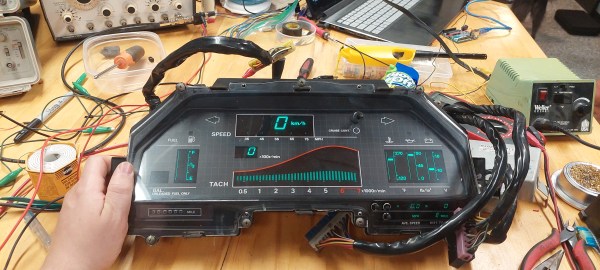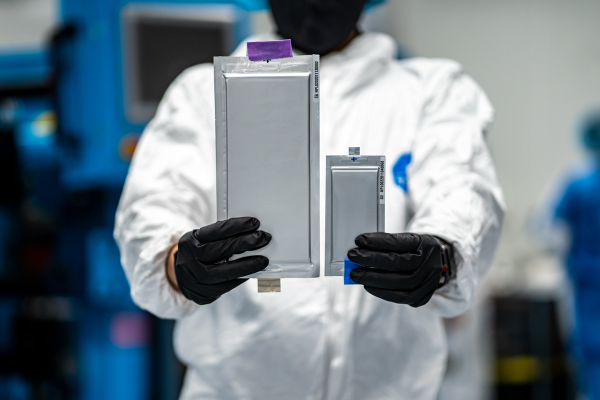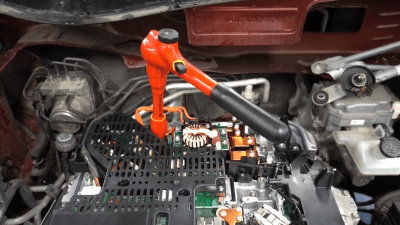You don’t have to be a car enthusiast to recognize that the 1984 Nissan 300x dash is a work of art. The graceful swoops and multisegment VFDs evoke an aesthetic that reminds us of a particular era. Rather than replace his dash with something drab and modern, [Evan] modified his dash to accept input from newer devices. Many of the sensors that feed directly into the dash are becoming harder to find as the years wear on, and rather than spoof every old device, [Evan] looked at each gauge.
Temperature and oil pressure are variable resistance sensors, and by removing half the voltage divider, it becomes a variable voltage sensor, as modern temperature sensors can output a voltage from 0 to 5. The tachometer required tracing the signal through the PCB as it expects a pulse every time a cylinder fires. By simulating cylinder pulses with a function generator, [Evan] found the filtering circuit and the microcontroller pin monitoring it. An optoisolator to protect the delicate MCU makes it easy to pipe the signal directly in.
Of course, not everything needed to be modified. A vacuum sensor provides a signal to the dash to indicate how much power the engine produces, which is pretty easy to spoof with a teensy connected to the CAN bus. All these mods are easily reversible and allow [Evan] to keep rocking the iconic dash with a more modern engine.
It’s an incredible hack that offers a view into how to trace, understand, and hack old electronics. Of course, if you’re keeping old built-in car bits, why not keep the carphone but connect it to your smartphone?






















